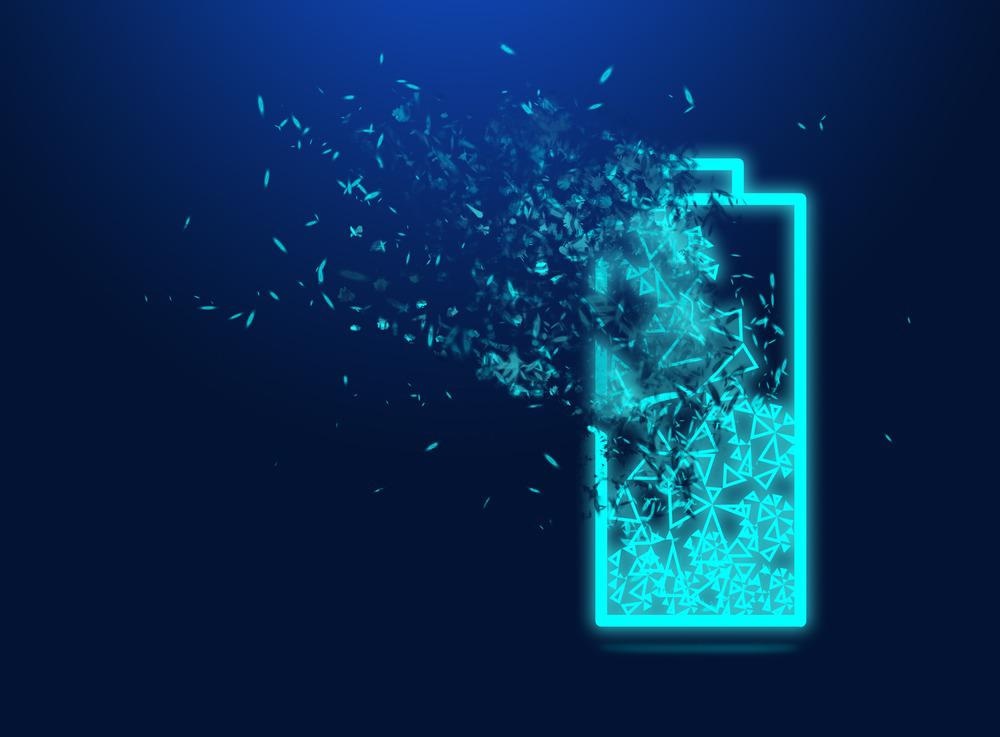Lithium (Li) is quickly becoming the most attractive anode choice for next-generation energy storage devices. A recent study published in the journal Carbon focuses on creating a dual-functional anode made of fluorinated graphene for dendrite-free, high-efficiency lithium metal batteries.

Study: Fluorinated graphene as a dual-functional anode to achieve dendrite-free and high-performance lithium metal batteries. Image Credit: New Africa/Shutterstock.com
Challenges Facing Lithium Metal Batteries (LMBs)
The main issue for lithium-ion batteries (LIBs) is to enhance their energy density in relation to the growing need for power storage. Unfortunately, the energy density of LIBs is improving at a moderate pace. Because of their excellent energy density, lithium metal batteries were introduced to solve this problem; however, these batteries also have certain inherent limitations.
The production of a solid electrolyte interphase (SEI), accompanied by splitting, peeling off, and significant volume variation of Li during cycles, results in continuous electrolyte and accessible lithium depletion. As a result, the short circuit problem and lower volume with poor stability make lithium metal batteries unsuitable for practical applications (LMBs).
Dendrite development that breaches the separator causes short-circuit-induced thermal instability. The breakdown of the SEI and the proliferation of dendritic development culminate in a substantial decrease in coulombic efficiency (CE). To address these issues, current research efforts are focusing on the development of novel anode materials for LMBs.
Fluorinated Carbon Materials for Dendrite-Free LMBs
Graphene has significant potential for usage as both a lithium substrate and an artificial solid-electrolyte interphase (ASEI) to boost the effectiveness of LMBs due to its unique properties such as strong physical strength and chemical resilience. However, the coulomb efficiency and cycle stability are restricted owing to graphene's large surface area, high electrolyte depletion, and the creation of SEI difficulties,
An effective and practical method for manufacturing dendrite-free LMBs is to use fluorinated carbon materials as anode materials, such as fluorinated nanoparticles, fluorinated graphene, and fluorinated porous carbon.
There is debate about whether the better performance is due to the three-dimensional structure (Li host) or the suggested SEI modification (fluorinated carbon materials). Although current research indicates that the enrichment layer increases LMB effectiveness, there are still certain concerns to be addressed, such as rate effectiveness, durability, and homogeneity of Li+ deposition.
Highlights of the Current Research
In this work, using fluorinated electrocatalytic exfoliated graphene (F-ECG), the researchers presented a unique dual-functional coating material for LMBs. The solvothermal approach is used to synthesize F-ECG, which is then coated on copper (Cu) via an electrophoretic deposition (EPD) procedure.
The straightforward procedure employed to create the new anodes for LMBs is binder-free and scaleable. A scanning electron microscope was utilized to evaluate the structure of F-ECG, while Raman spectroscopy was employed to study the crystalline structure. Atomic force microscopy (AFM) was utilized to capture the morphology and texture of the F-ECG sheets to assess their thickness.
Important Findings of the Study
The F-ECG coating surface, as the lithium formation substrate, restricts volume change during the plating/stripping cycle, resulting in superior physical robustness and extended cycle stability.
Furthermore, the coating of F-ECG plays an important role in the growth of the ASEI passive layer, preventing the creation of dead lithium, which can degrade the effectiveness of LMBs. The SEI lithium fluoride (LiF) species are produced during cycles as a byproduct of Li and CF (fluoro-carbon), displaying Li growth with a decreased nucleation overpotential and a dendrite-free interface.
Compared to the control specimen (pristine ECG-coated Cu), the SEI on ECG includes much fewer fluorine products, which are produced purely by the electrolyte interaction. When the manufactured anode material was employed in a fuel cell, it retained up to 72 percent of its capacity after 70 cycles.
Future Outlook and Prospects
Creating a dual-functional coating layer using F-ECG as a modifier significantly increases the long-term durability of functioning electrodes, opening the road for potential LMBs to be realized.
This research presents a revolutionary approach for implementing new materials as anode enrichment coating surfaces in LMBs, demonstrating considerable promise for high-performance LMBs in applications such as electric cars, consumer electronics, and smart appliances.
Reference
Jamaluddin, A. et al. (2022). Fluorinated graphene as a dual-functional anode to achieve dendrite-free and high-performance lithium metal batteries. Carbon. Available at: https://www.sciencedirect.com/science/article/pii/S0008622322004535?via%3Dihub
Disclaimer: The views expressed here are those of the author expressed in their private capacity and do not necessarily represent the views of AZoM.com Limited T/A AZoNetwork the owner and operator of this website. This disclaimer forms part of the Terms and conditions of use of this website.